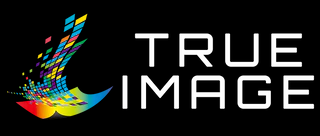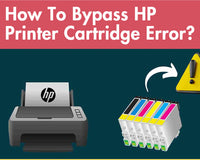Getting your passport photo right can feel tricky—whether it's meeting strict size requirements or avoiding shadows that lead to rejection. Printing passport photos yourself, though, is easier than you might think, and it can save you both time and money. Instead of relying on pharmacy booths or costly photo services, follow this simple troubleshooting guide to get a high-quality, passport-ready photo from home! From setting up your shot to selecting the right print settings, this guide provided by True Image will walk you through each step, making sure your photo meets all the official standards without the hassle.
Content:
- Why Print Our Passport Photos by Ourselves?
- What Do We Need to Print the Perfect Passport Photo?
- How to Create a Print-Ready Picture for Your Passport?
- How to Print Passport-Size Photos?
Why Print Our Passport Photos by Ourselves?
Printing your passport photos has several perks that make it a popular choice. First, it is budget-friendly—taking and printing your photo at home costs a fraction of what you'd pay at a photo studio or pharmacy. It is also convenient; there is no need to leave home or wait in line, allowing you to get your photo taken on your schedule. Plus, it gives you control over the final result. You can take multiple shots until you are satisfied, ensuring the photo meets both your personal preferences and official requirements.

What Do We Need to Print the Perfect Passport Photo?
Printing your satisfactory passport photo at home is simple, but you need a few essentials to ensure it is perfect for you. Here is a breakdown of what you need and why each item is important:
-
Reliable Camera or Smartphone
Why: Passport photos must be clear, high-resolution images that capture precise facial details.
What to Use: A digital camera with manual settings is ideal, but a smartphone camera can work if it has a high resolution (12 megapixels or more). Using a camera allows you to adjust brightness and ensure your face is sharply in focus, with no blur.
-
Plain, Light-Colored Background
Why: Passport photos require a simple background—typically white or light gray—with no shadows, patterns, or textures.
How to Achieve It: Find a blank wall or hang a white sheet to create a clean background. Stand about 3 feet away from the wall to avoid casting shadows, which could lead to rejection.
-
Even Lighting Setup
Why: Proper lighting ensures there are no shadows on your face or background, giving the photo a professional quality.
How to Set It Up: Use two light sources placed on either side of your face, ideally positioned at head level. It balances the light evenly across your face. Natural daylight works, too, especially if you position yourself near a window for soft, even lighting.
-
Photo Editing Software
Why: Editing software helps you resize, crop, and adjust the image to meet passport specifications, like the 45mm high by 35mm wide (the standard size used in photo booths in the UK).
Options: Photoshop and Lightroom are great, but free tools like GIMP, or even dedicated passport photo apps, work well. Please make sure the final photo shows your head and shoulders with a neutral expression and that it is cropped correctly.
-
High-Quality Printer
Why: A clear, high-resolution print is essential for passport photos, and regular home printers often need to deliver the quality needed.
What to Use: An inkjet or laser printer capable of printing at 300 dpi (dots per inch) or higher is recommended, such as well-known printer manufacturers HP, Canon, Epson, etc. These printers produce sharp images that meet passport requirements.
-
Glossy or Semi-Gloss Photo Paper
Why: Passport photos must be printed on high-quality photo paper to look professional and durable.
What to Use: Use glossy or semi-gloss paper, which enhances colors and keeps the image sharp. Avoid regular printer paper, as it won't meet official standards and may cause the photo to be rejected.
-
Tripod (Optional)
Why: A tripod keeps the camera stable and at eye level, helping you achieve a consistent, straight-on shot.
Alternative: If you don't have a tripod, use a flat surface like a table or shelf to keep the camera steady.
If you already have a suitable photo for your passport, all you need to do is adjust the background to be plain white or light-colored and then print it out. Use photo-editing software to smooth or replace the background, ensuring it is shadow-free and even. Once done, resize the photo to passport dimensions and print on glossy or semi-gloss photo paper for a professional finish.
How to Create a Print-Ready Picture for Your Passport?
Creating a print-ready passport photo requires precision in terms of dimensions, background, lighting, and quality. Either with a passport photo maker app or by cropping it yourself in Photoshop, followed by printing on various devices.
Option 1: Using a Passport Photo Maker
Passport photo maker apps simplify the process by offering pre-set templates that automatically adjust the size, background, and other passport photo requirements. Here’s how to use them:
- Download a Passport Photo App: Find a reputable passport photo maker app, available on both iOS and Android.
- Select the Appropriate Template: Choose the correct template based on the specifications in the UK.
- Take the Picture: Follow in-app prompts for positioning and lighting. Make sure the background is neutral and evenly lit.
- Adjust the Background: Some apps automatically remove backgrounds to make them white or gray if required. Check the output for any shadows or inconsistent colors.
- Save and Export the Image: Once your image is finalized, export it in high resolution for printing, usually in JPEG format.
Option 2: Cropping the Picture in Photoshop
For those comfortable with photo editing software, Photoshop offers precise control over every detail. Here’s a quick guide:
- Open the Image in Photoshop: Load your selected photo.
- Set the Crop Tool: In the Crop Tool settings, set the dimensions to 45x35mm and go to Image > Size to confirm the size and set the resolution to 300 dpi.
- Adjust and Crop: Position the face properly within the frame. Generally, the head should be centered with enough room on the sides and top.
- Background: Ensure the background is a solid color. If it isn’t, use the Magic Wand Tool and then highlight the background, then select Delete it. At the same time, you can select a light color to fill the background and then press OK.
- Save the Image: Save the edited photo in JPEG format at high quality to retain print clarity.

How to Print Passport-Size Photos?
Now that you have your digital passport photos ready, all you need to do is print them out. Before you press the Print button, it is important to use specific photo paper, as recommended for passport photos, with a paper size that allows for cutting to the required dimensions.
Printing from a Computer
- Step 1: Open the digital photo file on your computer. If you use a computer with Windows System, open it in the Windows Photo Viewer. If it is a Mac, double-click on the photo to open its preview.
- Step 2: Make sure to disable any automatic resizing options to avoid changes in dimensions. If printing on 4x6-inch photo paper, you can place two passport photos side by side for easier cutting.
- Step 3: Go to the “Print” menu and select the correct settings for photo printing. Print in “best quality” mode.
- Step 4: Print the photo and carefully cut it to size with scissors.
Printing from a Smartphone
- Step 1: Connect your smartphone to a Wi-Fi-enabled printer or use a photo-printing app like HP Smart or Epson iPrint.
- Step 2: Find your photo in the picture gallery, and then open this image.
- Step 3: Insert photo paper, adjust printer settings on the app, and find the share button to select print.
Conclusion
Printing passport photos at home can save time and money, but it requires careful attention to detail to meet the exacting standards set by passport agencies. By troubleshooting common issues in capturing, editing, and printing your photo, you can produce a professional-quality image that meets official specifications. If you run into repeated issues, or or are in a hurry to use your passport, remember that photo services at drugstores or online printing sites can offer professional assistance to ensure your passport photo is accepted on the first try.
















